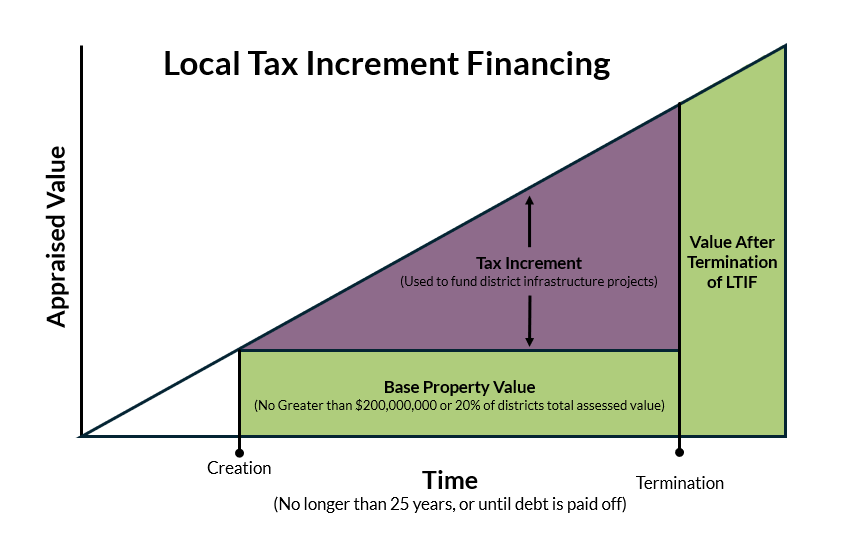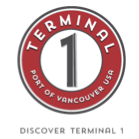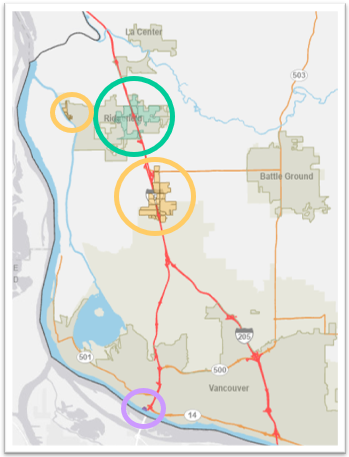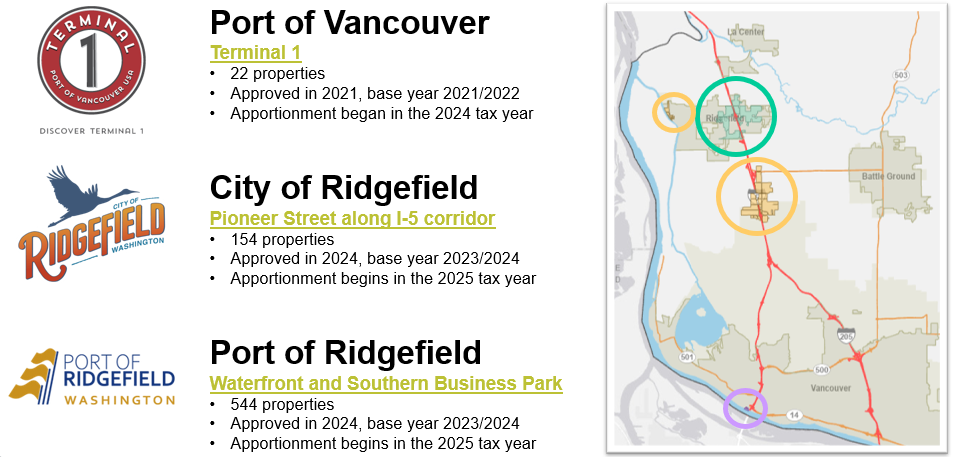What is Local Tax Increment Financing?
In 2021, the Washington State Legislature passed Engrossed Substitute House Bill 1189 (ESHB1189) that allows counties, cities, towns and port districts to establish Local Tax Increment Financing (LTIF) areas to fund certain public improvements. This financing option provides sponsoring jurisdictions (county, city, town, port or any combination thereof) the authority to apportion funds from certain taxing districts regular property tax levies depending on the boundaries of the tax increment area. The property tax revenues apportioned by the tax increment area are used to finance specified infrastructure projects designed to promote economic development.
Active Tax Increment Areas
Starting in 2026, tax statements include a message notifying tax payers that their property is included in a LTIF area. Below is a listing of active LTIFs in Clark County. Questions about the LTIF or LTIF financed projects should be directed to the district(s) linked below.
Port of Vancouver (LTIF1)Terminal 1
| ||
City of Ridgefield (LTIF2)Pioneer Street along I-5 corridor
| ||
Port of Ridgefield (LTIF3)Waterfront & Southern Business Park
|
Administration of Tax Increment Financing
Per state statute, the Assessor's & Treasurer's Offices are tasked with administering Tax Increment Financing. See information about each Office's role below:
Assessor's Role
The Assessors Office role in local tax increment financing is to set up and administer the LTIF after the sponsoring jurisdiction approves their ordinance. This includes verifying the list of properties included in the LTIF and their geographical boundary along with determining the base year and assessed value of the base year which is limited to $200,000,000 or 20% of the districts total assessed value, setting up any tax code area changes or other tasks as determined by each Counties Computer-Assisted Mass Appraisal (CAMA) system. After the initial set up, the Assessors Office values all properties in the LTIF area along with administering all impacted levies to make sure they are levied correctly per Department of Revenue's guidance.
Treasurer's Role
The Treasurer's Office verifies levy amounts and apportions the funds collected from the Originating Districts to the Sponsoring LTIF Districts. This includes providing reports to Originating and Sponsoring LTIF Districts on revenues diverted and apportioned to each taxing district.





